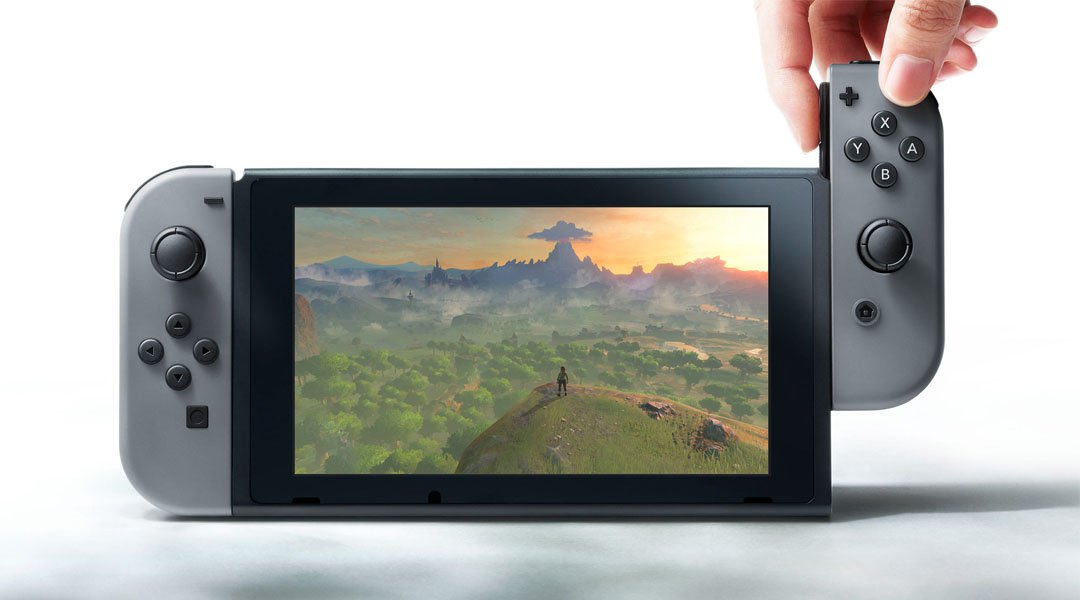
Nintendo Switch's Success Falls To Price And Battery
By Riley Little 25 October 2016
While gamers take in the recent unveiling of Nintendo’s latest console, one editor believes the platform’s success will ultimately come down to its battery life and price point.
Before getting into the meat of this opinion piece, it’s important to preface it with the fact that I will be buying the Nintendo Switch. The concept of having a home console that can be brought along with me whilst on the go is a wonderful premise, and the games showcased thus far look rather promising. Simply put, the Switch innovates in ways that the Wii U did not, but there’s no denying that it’ll be interesting to see how well it performs in the marketplace. Given that certain aspects of the hardware are still up in the air, however, there are two major factors in particular that could keep it from being a success: price point and battery life.
Now price has an obvious impact on any product – and this is particularly true with a dedicated gaming console – but this is an issue that has plagued Nintendo in the past. Looking back on the launch of the 3DS, the portable failed to gain much traction at launch with its $249.99 USD price tag. This forced the firm to reassess and knock down the cost by almost one-third of its initial sum – less than six months after its initial release, no less. To avoid such catastrophic missteps in the future, Nintendo needs to make sure that it nails its product’s price point right from the get-go.

Price, price, baby.
Doing so will ensure that third-party publishers are better able to justify supporting the Switch, because a larger install base reduces the risk of getting burned by a costly development cycle. The cheaper the point of entry is, the more the console will sell. Now, it’s hard to determine just how much the finished product will cost (although some reports peg that window at $299.99-$349.99 USD), but Nintendo will be much better off with more units out and in the hands of gamers rather than on shelves gathering dust. That’s not to say that the Big N should hand out its product like candy, that would be foolish, but it needs to be weary of how much consumers are willing to spend.
Regardless, the final price point will be irrelevant in the eyes of some longstanding fans that have already bought into the Switch and its unique ‘play anywhere’ mantra. As the main selling point behind the console, it’s crucial that players will be able to take their gaming experience with them wherever they may roam. If the battery only lasts two or three hours though, then the practicality of the device is sure to be called into question by critics and shoppers alike. The hypothetical fallout from a lacklustre power supply would inevitably mean that initial impressions are going to do a lot more harm than good, but it goes a lot deeper than that.
As long as people are out and about with their Nintendo Switch in-hand, others will be exposed to the console and its unique premise. Add in the multiplayer capabilities of the Joy-Con controllers, and the platform opens up the possibility of impromptu and very public gameplay sessions. This will probably never spark a sales blitz on its own, but it will increase brand awareness and the unique design will allow people to share the experience rather than keep it to themselves.

This in-flight entertainment will be short lived if it dies three hours into a six-hour trip.
The house of Mario is off to a good start with its Switch console, as it has been able to grab the attention of casual and hardcore audiences alike. What follows next will be a clarification of software available in March 2017 and beyond, a peek under the hood of the new tech, and an official price point. All three of these things will play a factor in determining just how well the system performs out of the gate, but the latter two will impact the platform longterm.
Exclusives and third-party support will come and go – each undoubtedly impacting the popularity of the Switch as they do so – but the longterm success of the console will ultimately come down to how long it can be utilized when it’s off-dock and how much it’s going to cost to start playing. Nintendo already knows the answers to both of these questions, and it makes sense that such things wouldn’t be disclosed from the “first look” trailer. With that said, those details will become major talking points in the near future, and you can bet consumers will be listening.
Nintendo Switch is set to arrive in March 2017.
